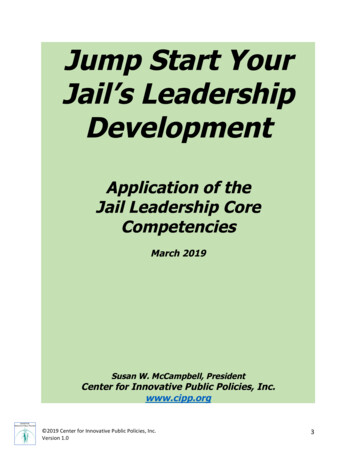
Transcription
Jump Start YourJail’s LeadershipDevelopmentApplication of theJail Leadership CoreCompetenciesMarch 2019Susan W. McCampbell, PresidentCenter for Innovative Public Policies, Inc.www.cipp.org 2019 Center for Innovative Public Policies, Inc.Version 1.03
Table of ContentsPageüGrowing Your Jail’s Next Leaders3üWhat’s Here?3üThe Development of the Twenty-Two Core Competencies4üOverview - The Twenty-Two Core Competencies for Jail Leaders5üNow What?o Using the Core Competencies for Organizational Developmento Using the Core Competencies for Personal DevelopmentüWhat’s Next?o Overcoming Obstacles: Strategies for Implementation14üAppendix A – The Detail Twenty-Two Core Competencies for Jail Leaders16üAppendix B – Self-Assessment – Core Competencies28üResources and Bibliography53612Thanks to the reviewers of the draft of this document, graduates of the National Jail LeadershipCommand Academy (NJLCA): Amy Grimm, Maricopa County, Az., Eddie Lance, TransylvaniaCounty, N.C., Aaron Shepherd, Ada County, Id., John DiCroce, SCORE, Wa., Chad Kolitewenzew,Kankakee County, Il., William Sanders, Riverside Regional Jail, Va., Fernando Castro, San Carlos, Az.,Michael Beatty, Charleston County, S.C., Ricky Armstrong, McLennan County, Tx., John Johnson,Miami-Dade Corrections and Rehabilitation, Fl., Jeffrey Jackson, Desoto County, Ms., ShawnLaughlin, Broomfield Police Department, Co., Melissa Rodriguez, Miami-Dade Corrections andRehabilitation, Fl., John Hicks, York County, Me. Dareece Canady, Collier County, Fl., Lynni O’Haver,Collier County, Fl., Henry Reyes, Tarrant County, Tx., Shaun Klucznik, Hernando County, Fl., MishaKarakashevich, Denton County, Tx., Charles Tomes, Ontario County, NY., Anthony Gettler, City ofDenver, Co., Shaun Hubbard, Lexington-Fayette, Ky., Leslie Hood, Shelby County, Ms., Ronny Taylor,Harris County, Tx. Mary Earley, Douglas County, Ne., Jonathan Ede, Travis County, Tx., PaulStoltenberg, Ada County, Id., George Pizzo, Camden County, NJ., Patricia Ramsey, Lee County, Fl.Thanks also to Dr. Randy Garner, Sam Houston State University, Jim Hart, University of Tennessee,Genie Elton, Kitsap County, Wa., and Melissa McClellan, Oakland County, Mi. 2019 Center for Innovative Public Policies, Inc.Version 1.04
Growing Your Jail’s Next Leaders“Growing other leaders from theranks isn’t just the duty of theleader, it’s an obligation.”Warren BennisWhat skills, knowledge andabilities do individuals need topossess to be an effective jailleader? How can organizationsgrow their next leaders?Leadership development remains apriority for the profession. Members ofthe Baby Boomer generation are retiringeach day, and specific initiatives toprepare the next leaders lag behind theneeds.Need for Leadership DevelopmentA recent survey of jail leadersrevealed that 96% of respondentshad a high or medium priorityneed for leadership developmentin their jails.Leadership development doesn’t happenin the boss’s office or in a closedconference room. The initiative needs tohave vision, be shared, and enlistsupporters through the community. Jailleadership is a public safety issue. To besuccessful, the initiative must havetransparency and inclusion.What’s Here?This toolkit is intended to provide thefoundational information needed by jailsto jump start or refine leadershipdevelopment programs. Providing 2019 Center for Innovative Public Policies, Inc.Version 1.0foundational ideas means that jail leaderswill need to invest time in theirexploration of ideas presented here.This toolkit includes:Ø A description of the corecompetencies for jail leaders;Ø Strategies to use the corecompetencies to develop or update ajail’s leadership developmentprogram;Ø Using the competencies fororganizational development;Ø Self-development ideas employing thecore competencies;Ø A self-assessment of the skills,knowledge and abilities of the corecompetencies; andØ Resources and bibliography.The competencies define the specificskills, knowledge and abilities needed byjail leaders. Articles, published inAmerican Jails, expand on each of thecompetencies and provide information touse to activate a leadership program,including resources and a suggestedleadership library. For a personalleadership development assessment, achecklist is provided for a self-rating.Using this information can inform thereader’s own leadership needs and plotthe journey.Who can use this toolkit?ØØØØØØJail leaders, emerging leaders,mid-managers, supervisors,including jail training personnel.Human Resources professionals.Criminal Justice Educators.Local and state criminal justicepolicy and decision-makers.Elected officials.Community and businesses.3
ØPublic safety colleagues outsidecorrections/jails.Benefits to those using this toolkitinclude, but are not limited to:ØØØØØØIdentify objective information tohire, promote, and develop jailprofessionals.Provide opportunities forprofessional and personal growth.Inform decision-makers, funders,the community and businessregarding the skills, knowledgesand abilities needed to lead jails.Identify platforms forcollaboration with other publicagencies needing to develop thenext generation of leaders.Establish cost effective strategiesto develop leaders.Give an evidence-base to humanresources’ functions –update/develop job descriptions,promotional processes, andtraining. 2019 Center for Innovative Public Policies, Inc.Version 1.04
Development of the Twenty-TwoCore Competenciescompetencies, which included a “leader’slibrary” to provide further suggestions fororganizational and personal development.The core competencies were developed ina collaborative, national effort, funded bythe U. S. Dept. of Justice, Bureau of JusticeAssistance. The full report is available al 6.6.11bjajails mentoring-core competencies.pdfThe articles are achieved athttp://www.cipp.org/corecompetencies.html and on the AJAwebsite id 228The core competencies were developedby jail leaders from all regions of theUnited States, all sizes of jails, andrepresenting different organizationalstructures (e.g. sheriff, county, regional,tribal).The word “jail” does not often appear inthe core competencies. The teamdeveloping the competencies was clearthat leadership is much broader than“jail.” The coalition assumed thatsomeone preparing for jail leadership iscompetent in the “nuts and bolts” ofoperations. This is why collaborationwith other organizations and publicsafety agencies is possible using the corecompetencies.Starting in August 2015, American Jails,the publication of the American JailAssociation(https://www.americanjail.org), includedin each of the bi-monthly magazine, anexploration of each of the core 2019 Center for Innovative Public Policies, Inc.Version 1.0The core competencies are the foundationfor current national and regional jailleadership programs, including theNational Jail Leadership CommandAcademy(http://nationaljailacademy.org), the JailExecutive Development Program, theSouthwest Florida Jail LeadershipInitiative, the California Jail CommandAcademy, the Virginia Association ofRegional Jails Leadership Initiative, andthe New Jersey Correctional LeadershipSeries. (Seehttps://www.americanjail.org/jli formore information). Other states, andregions are also exploring leadershipprogram based on the core competencies.While it is unlikely that all 22competencies can be addressed in anysingle leadership program, collaborationsamong participants have identified thetop priorities for those organizations.4
Overview - The Twenty-Two Core Competencies for Jail LeadersThe jail leaders developing the competencies did not prioritize them, and this is analphabetical list with the link to the article about each. Appendix A includes the specificskills, knowledge and abilities for each of the competencies.#1234567891011121314Core Competency/Link to ArticlesCritical Thinking: anticipate, analyze and resolve organizational challenges and 255/1 critical thinking.pdfAssure organizational 37578255/2 organizational accountability.pdfBuild and maintain positive relationships with external 578255/3 external stakeholders.pdfBuild and maintain teamwork; mentor and coach /4 mentoring and coaching others.pdfCommunicate effectively, internally and 8255/5 communicate effectively.pdfFiscal 8255/6 fiscal resourcesl.pdfDevelop and maintain a positive organizational culture that promotes respect for diverse 7 positive organizational culture.pdfDevelop and sustain organizational 37578255/8 vision organization mission.pdfEngage in Strategic 55/9 strategic planning.pdfEnhance self-awareness; maintain proactive professional 8255/10 self-awareness professional commitment.pdfEstablish organizational authority, roles, and 7/37578255/11 establish authority.pdfLeverage the role of the jail in the criminal justice /12 jails role in cj system.pdfMake sound 255/13 sound decisions no ads.pdfManage /14 change no ads.pdf15 Manage employee and labor /3/7/5/7/37578255/15 manage labor relations.pdfManage power and 255/16 manage power and influence.pdfManage 7 time management.pdfObtain and manage human 255/18 human resources.pdfOversee inmate and facility 8255/19 inmate facility management.pdfOversee physical plant 8255/20 physical plant management.pdfReduce jail-related 78255/21 reduce jail-rel.[3525].pdfUnderstand and manage emerging 8255/22 managing emerging technology.pdf 2019 Center for Innovative Public Policies, Inc.Version 1.05
Now What? Using the CoreCompetencies for OrganizationalDevelopmentHow can a jail use the core competenciesto improve the ORGANIZATION andjump start jail leadership initiatives?The jail’s leadership team should reviewall the competencies, assess theirorganization’s alignment and setpriorities. Without extraordinaryresources, no jail is likely to crediblyimplement a totally comprehensivesystem. Progress requires the sharedcommitment of human resources andfiscal staff. You’ll find a discussion ofmany these suggestions in an article oncore competencies.As the Chinese proverb tells us:"A journey of a thousandmiles begins with a single step."1.Begin a leadership developmentinitiative.Document the need for a formalized,proactive leadership developmentprogram in your jail. What’s the data –how many are retiring? What is theimmediate future of retirements in yourjail? Are supervisors and mid-managersbeing prepared for leadership roles? Howare leaders currently being prepared?How can this data be used tosupport/justify the costs of a leadershipdevelopment program?What are leadership in your community –for example, in local law enforcement orother criminal justice and public serviceagencies? Chances are if the jail is 2019 Center for Innovative Public Policies, Inc.Version 1.0struggling with leadership development,so are brother/sister agencies. Reach out,build coalitions, share information,develop collaborative programs.A jail cannot be an effective partner withothers in leadership developmentinitiatives if it has not defined for itselfwhat it needs, and can professionallyarticulate those needs.Assure that the internal culture isassessed, identified, and addressed assuch a new initiative begins. Who are thehelpers, who are the detractors, and howcan an internal coalition be built andmaintained?Use the personal leadership inventory toassess the status of skills, knowledge andabilities among emerging jail leaders.What Data Can Help?Relevant basic information jailsshould maintain include: Accurate annual attrition data byrank;Anticipated retirements;Effectiveness and timeliness of thepromotional process;Current leadership initiatives;Why employees are leaving;Skill sets of emerging leaders;Needs/initiatives of local publicsafety agencies;Resources available at localcolleges and universities; andInterest of staff in promoting.6
2.Adopt and practice a genuinecommitment to the nextgeneration of leaders. Involve, communicate andcommunicate leadership visionWhat else? Align training to the corecompetencies.Align training to mission, visionand values.Involve the local community andstakeholders.Outreach to the neighbors the jailserves, let the citizens get to knowthe jail’s leaders (formal andinformal).Is there a clear commitment to the nextgeneration of leaders in your jail?Damage from “pretending” there is acommitment measured against actionsmay be a substantial gap. Do the jail’sleaders walk the talk? How can acommitment, even with limited resources,be initiated?Create/revise/update the jail’s mission,vision and values statements based oncore competencies that includes acommitment to staff development. Alignpractices with mission, vision, values andcore competencies.3.Seek to abandon the notion that “if it ain’tbroke, don’t even look at it” – infuse theorganization with the freedom tochallenge how things are done and focuson continuous improvement.Build on a credible foundation. When wasthe last time the jail’s organizationalstructure was objectively evaluated? Arethe right people in the right jobs?When was the jail’s mission, vision orvalue statements last updated? Does thisdocument provide the foundation for howto grow the next generation of leaders?Actions may include: Conduct on-going assessment of staffreadiness for promotions toleadership positions;Hold leadership seminars based onneeds and interests, and include asmany staff who are interested.Find mentors for emerging leaders.Affirm the position that all employeesare leaders regardless of rank. 2019 Center for Innovative Public Policies, Inc.Version 1.0 Assess the OrganizationalStructure and the PeopleIs the organization top-heavy,decentralized, responsive, wellperforming? Are supervisors of highquality and worthy of being role models?Is the real accountability in the agency?Seek through leadership development toperpetuate or replicate an organizationthat is high functioning, well respected,and seen as an ethical organization.i7
4.Core Competencies Guide DailyOperationsConsider assuring the core competenciesare incorporated into daily operationsthrough internal education, achievingbuy-in, identifying priorities, anddeveloping and implementing actionplans. If the jail is not able to take on aleadership development program, startby smaller initiatives. Review operationsthrough the lens of the corecompetencies. Is the jail up-to-date onaccepted or emerging practices?5.instrument to look more widely atemployees can be a mini-assessmentcenter – and can inform and prioritizetraining needs.Time to Objectively Critique All Training Develop assessment centersand/or job simulations foremerging leaders based on thecore competencies to identifytheir strengths and weaknesses.Act on results.Traditional assessment centers used forpromotion, if solidly linked to bona fidejob duties and core competencies, areinvaluable to growing future leaders.Mini-assessment centers, or jobsimulation activities, can be used to giveboth the organization a benchmark onwhat the next generation needs, andhighlight what individuals might want toimprove. Start with assessment of a fewcompetencies and build on success. Askemerging leaders to: prepare next year’sbudget (or part of the budget); assess thejail’s chain-of-command and developrecommendations; and/or implementaccountability-based management in yourjail.Appendix B contains an instrument thatindividuals can use to assess their ownprogress with acquiring the skills,knowledge and abilities of the 22 corecompetencies. Using this same 2019 Center for Innovative Public Policies, Inc.Version 1.0 6.Are training strategies designed toaddress the different learning stylessuch as:Are adult learning concepts built in tothe system?Are the learning styles of the differentgenerations built in. Do millennials relymore technology in their learning?Is your training in touch with the actualjob being done?Do the instructors come from the staffdoing the work? If professional trainerswhat are the implications on yourculture?Critically examine currenttraining and employeedevelopment programs.What training is provided to employees,when, by whom, and is the trainingdirectly linked to required job duties. Dotraining dollars have a positive return forthe jail? Have training strategies beenupdated to address for the needs ofMillennials and Generation Zs? Areinstructors trained and competent? Doesyour jail have an FTO/CTO program,formalized in policy/procedures? Howdoes the requirements of that programline up with the core competencies?iiCritically review existing leadershipdevelopment initiatives –internal/external, that is intended toprepare the next leaders. Make a list.What is available and what is used? How8
many people have attended variousprograms. What is their feedback? Howhas the participation of staff in variousprograms provided concreteimprovements based on theirexperiences? Is there a mentorship orshadowing program? How do newsupervisors, mid-managers and leaderslearn to LEAD?Consider the needs that can be revealed ifemployees self-assess their leadershipneeds, for example, by using a tool likeAppendix B.7.Establish a mentorship program(Resources available Mentorship programs are helpful for thementor and the mentee. These areinformal programs, but require a level ofoversight to organize, observe, assess,and modify as needed.The organization can focus on mentoringfor different organizational levels (forexample, for executive, for first linesupervisors) and for job duties – alwaysincluding the civilian staff.8.Human Resources FusionThe Human Resources personnel who areto serve the jail require education,alignment, nudging, and involvement tojump start jail leadership. Among thecollaborations are:iiia. Improve promotional processes.Revise assessment centers forselection of mid-manger/leaderincorporating the core competencies.Revise job interview questions andaccepted responses based on core 2019 Center for Innovative Public Policies, Inc.Version 1.0competencies. Develop studymaterials based on core competencies.b. Link promotional opportunities formid-managers and leaders to the corecompetencies. Can those who wish tobe promoted demonstrate theirproficiency? Are promotionalmaterials linked to the corecompetencies? Communicate,concretely what it takes to becomeproficient and advance in theorganization.c. Revise performance appraisals withbenchmarks anchored in the corecompetencies. Performanceappraisals should be more thanwhether people show up to work ontime and have neat uniforms. As jobdescriptions are updated, also updateand align performance appraisals tothe core competencies.d. Assess job announcements/recruitments/solicitations for all levelsof positions in the organization. Manyjails now note a preference in hiringand promotion for leadership levelpositions for Certified Jail Managers(CJMs). Revise materials to includethe skills, knowledge and abilities ofthe critical core competencies?Another opportunity to involve stafffrom human resources.e. Update/revise job descriptions forfirst line, mid-managers andleadership positions. The corecompetencies provide informationthat can be used to update the jobdescriptions for leaders. Whetherused for internal promotionalprocesses or to recruit outside theorganization, there are clear skills,knowledge and abilities needed.9
11.9.External stakeholders.Share information about the professionalexpectations of jail leaders with funders,community leaders, stakeholders andother public agencies in your jurisdiction.We know that about half the adults in theUS have a loved one who has been or isincarcerated. There is a constituency whosees the need for well-run, safe jails.Educate the funders, community leaders,citizens about what your jail needs –especially in terms of the next leaders.iv10.Seek collaborations; co-developleadership initiatives. Reviewleadership opportunities inyour county, region, state ornear-by states.There are public and private sectoragencies experiencing the sameleadership crisis as the jail. Find them,invite them in, find the common threads,develop action plans. There are only asmall number of the core competenciesthat speak to the specifics of jailoperations. Most competencies arefocused on leadership – regardless of theorganization. Capitalize on this. Identifywho can provide what resources. Whoare the business leaders in thecommunity and can they commit toimproving the jurisdiction throughleadership initiatives? Collaborate onDistance and eLearning platforms.While it may seem that technical colleges,colleges and universities know what isneeded in the jail for leadership – theymost likely do not. Involve them, learnfrom them, they will learn from you andbe a more effective partner. 2019 Center for Innovative Public Policies, Inc.Version 1.0Role model and encouragereading the competency articlesamong shifts, work groups, orstaff meetings. Create aleadership lending library –hard copy or electronic.If the leadership doesn’t think this topic isimportant, neither will anyone else. Askstaff to take the lead in book groupdiscussions. Find ways to introduce thecompetencies and the vision of the agencyfor the next leaders.Establish the jail’s place as a learningenvironment – setting expectations forincreasing professional and leadershipcapabilities using the competencies.Develop shift briefings/roll call trainings.Share information there. Create theexpectation that all employees areleaders.12.Hold agency sponsoredseminars, inviting other publicsafety organizations and jails.Take the jail to a new level and hostevents, seminars, learning opportunitiesfor employees, local governmentsworkers, and peers. Find hot topics,invite experts to be involved. Establish apositive presence in the community.13.Work to establish anenvironment and internalculture where people areexcited about coming to work.Identify what is important to staff.Conduct “stay interviews.” Fix what youcan. Find ways to increase opportunitiesand job satisfaction. Learn about thenewest generations in the work place.10
Provide for job rotation and opportunitieswhere permitted by work rules.14.Encourage/pay for professionalcertification programsExamine ways to reward staff forleadership initiatives – whether seeking aCJM, Certified Public Manager, orattending the state jail conference –increase the employees’ exposure toother ways of doing things and otherways of thinking.15.Establish an educationalincentive program collaboratingwith local institutions of highereducation and technical skills.Identify resources to encourage attendingprograms, in person or on-line. May bemore pay doesn’t fit in the budget, butopportunities for promotions, or differentjob assignments do. Reevaluate options.Conclusion – For theOrganizationThese are just a few ideas about how corecompetencies can be used to advance thejail’s leadership development initiatives.There are undoubtedly more andnetworking with peers will result in moreideas. 2019 Center for Innovative Public Policies, Inc.Version 1.011
Using the Core Competencies forPersonal Developmentmentor who can help you with looking atyourself, giving ideas, and providingencouragement.Self- improvement is up to you. You setyour personal priorities. As ThomasEdison observed – whether you thinkyou can or think you can’t, you’re right.It’s all in the attitude.Identify professional certifications and, asappropriate, obtain those certifications.One way for you to get insight into yourabilities is to use Appendix B. This is achecklist that allows you to honestlyassess your own leadership skills. If youchoose to use this tool – plot your pathbased on your results.1.Read the articles, assemble apersonal library. Expand yourbase of knowledge aboutleadership.Time is important to all, and how youallocate your time is your prerogative.Include in your week a commitment toread one book, one article, or networkwith peers outside your jail. See theResources and Bibliography included inthis tool kit. If you don’t make your goal,keep trying. Sign-up for the many of thenews aggregators which bringinformation to your inbox.2.Honestly assess your skills,knowledge and abilities witheach core competency.Be honest with yourself. No one elseneeds to know what you identify as yourstrengths or weaknesses. Figure out whatthe top three or five things are you needto do. Maybe you don’t aspire for apromotion in this job, and you can focuson your personal satisfaction in your joband improving those you work with. Itmay take a few months, or years, but 2019 Center for Innovative Public Policies, Inc.Version 1.0See Appendix B.3.Bloom where you are planted.Assess how to improve operations,resource management, etc. which areunder your control and develop and worka plan.You may be frustrated because you don’tsee your jail’s leadership moving forward,supporting employees, or beingtransparent. After you’ve tried to changethe status quo – consider an alteredagenda – focus on the people, process andthings you can control.4.Find a mentor, inside or outsidethe organization.Having a person to be a listener, a guider,a corrector, and a cheerleader makes allthe difference. Find someone who will behonest with you and mirror back with youare saying. Find someone who is willing,approachable, honest, credible,transparent, visionary, and committed toyour success.5.Mentor someone.Reach out and offer your knowledge tosomeone else. Do it because they arewilling to hear you, and because you willbe better because of the experience. It isNOT what’s in it for you, but yoursatisfaction in watching someone elsegrow.12
6.Reach out to peers in otheragencies (not just jails) toincrease your perspective andknowledge.Network. Often, we only know what weknow – and having other ideas isinvaluable. Maybe they won’t work inyour jail, but they will give yourperspective. Find others on list servesand blogs what inspire to move youtoward leadership learning.7.Join community groups, attendpublic meetings, learn aboutstakeholders.The boss should not be the only oneexpected to interact with the community,attend public hearings, defend the jail’sbudget, or keep the neighborhoods up todate on the jail. Join in. Learn why it isthat the animal shelter’s budget will beapproved and the jail’s will be cut. Findout how powerful a communityorganization can be in shaping publicpolicy. Invite people to the jail for tours,start a citizen’s advisory board or acitizen academy.8.9.Share what you know.Write an article, develop curriculum,volunteer to present at conferences –stretch yourself. See above, find a mentorto help you.Conclusion – For YouThere are many more ideas, orcombination of ideas to enable yourpersonal growth and development. Formore ideas go to:http://www.cipp.org/uploads/3/7/5/7/37578255/10 selfawareness professional commitment.pdfAttend professionalconferences.Even if you sometimes have to use yourown resources, commit to improving bynetworking and expanding you. 2019 Center for Innovative Public Policies, Inc.Version 1.013
What’s Next? OvercomingObstacles and Strategies forImplementationLeadership development is not selfinitiating. It takes an individual, acommitted group, and coalition ofworkers to identify this priority and thenstart working.To provide additional information, asurvey of twenty-two jail administratorsasked them to identify the barriers tobeginning or enhancing their leadershipprogram, noting as many of the potentialbarriers as relevant.Barriers to Enhancing or Starting Jail Leadership Program (% ofResponders N 21)6050403020100Additional concerns included: Insuring generational relevance –exciting both the newestgenerations, and getting buy-in ofolder workersVerbal commitment from leaders;but no actual follow-through;empty promisesLack of staff and technologysupportOvercoming “fear” among olderleaders that the “kids” will taketheir jobs 2019 Center for Innovative Public Policies, Inc.Version 1.0 Trust of leadershipOvercoming history of inactionTimeGetting staff motivated withreasons to “buy-in”14
Start conversations about what is needed,and how it can happen. Find people whoare passionate about this. Recruit thosewho may not be as motivated, but will bethe end-users (the Millennials andGeneration Zs). Find communitysupporters. Involve other publicorganizations. Enlist the help of the localcommunity college and/or university.Establish a task force. Assign leadership.Share the work. Review the corecompetencies. Determine the prioritiesfor your jail. Establish deadlines. Holdeach other accountable. Don’t let barriersstop progress, find ways around.There are many formats of action plansand the essential ingredients are: Specific actions will occur in clear,objective, measurable statements.Who will carry out these actions;identify others who need to beinvolved
jails_mentoring-core_competencies.pdf The core competencies were developed by jail leaders from all regions of the United States, all sizes of jails, and representing different organizational structures (e.g. sheriff, county, regional, tribal). The word "jail" does not often appear in the core competencies. The team developing the .

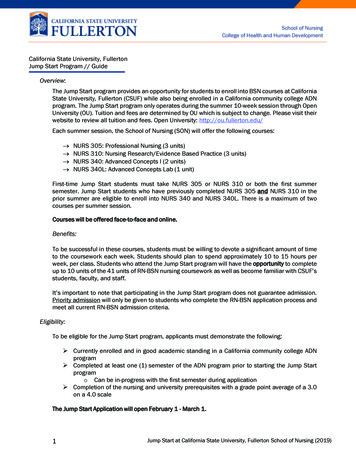
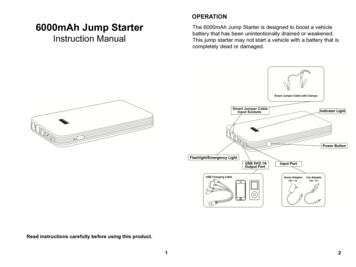


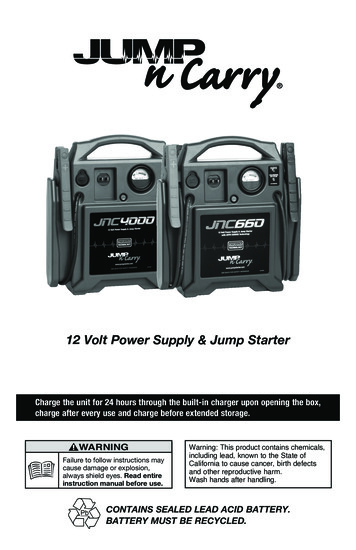

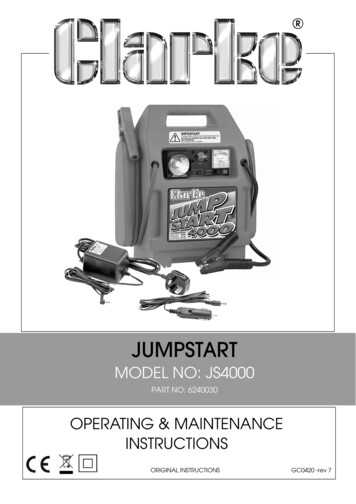

![Letter from Birmingham Jail (1963) [Abridged]](/img/2/1963-mlk-letter-abridged.jpg)
